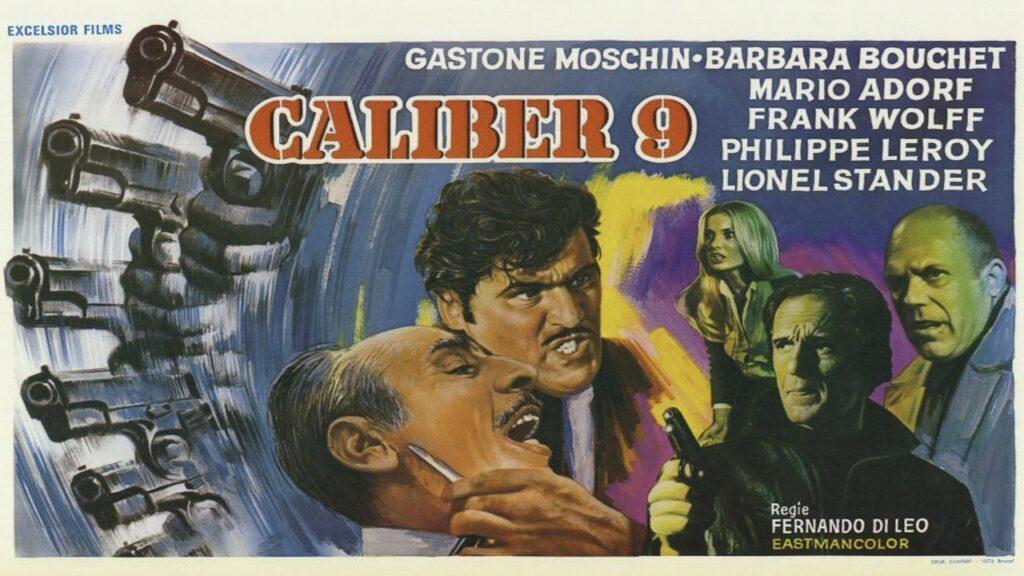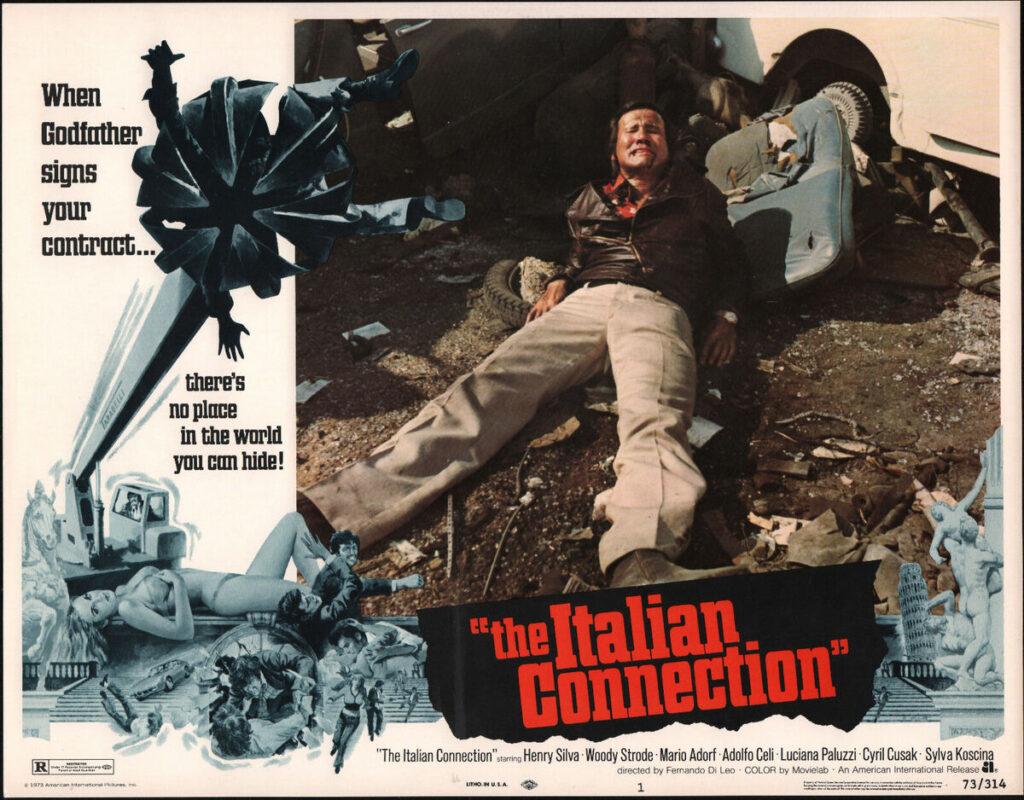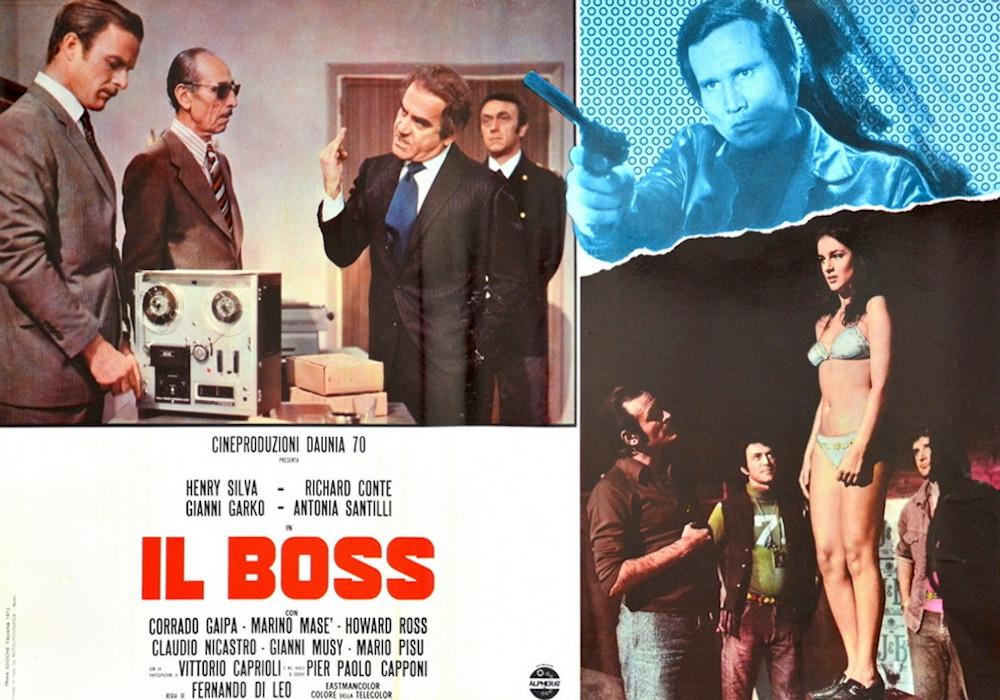After working as an uncredited screenwriter on Sergio Leone’s Man with No Name cycle, Fernando Di Leo made a series of popular “spaghetti crime” films in the early 1970’s which heavily influenced director Quentin Tarantino and others. A Di Leo retrospective at the Metrograph starts Friday, including an important trilogy, one of the Leone films he worked on and the Tarantino movie most informed by his visual and narrative style. Go here for showtimes and ticket info.
The Di Leo works screened in the retrospective are examples of the Italian poliziotteschi genre (not to be confused with the giallo genre which were murder mysteries). These were crime films or police procedurals made during the period of political unrest in Italy called “the days of lead” in which crime rates rose, militant political terrorist attacks by both left and right groups occurred frequently and there was violent conflict within the Sicilian Mafia. The stylistic markers of the genre include graphic violence, car chases, corruption, pop art-influenced decors and topical political protests. In the July-August 2013 issue of Film Comment Magazine, Maitland McDonagh described the wardrobe and accessories which populated Di Leo’s early ’70’s crime dramas:
“…shirts with flared collars, wide sleeves, and tight cuffs; faded bell-bottoms; denim hot pants; Sansabelt slacks; aviator sunglasses; pastel V-neck pullovers; sprayed-to-perfection hair (and that’s just the men)…”
The beverages of choice are always J&B scotch (perhaps because of its association with Italian-Americans Dean Martin and Frank Sinatra) and the popular Italian bitters brand Fernet-Branca. (There are Fernet-Branca ashtrays and posters seen everywhere, maybe an early example of product placement.) Instead of fast sports cars the gangsters chase each other in tiny square-shaped Fiats. The soundtracks feature pulsating beats, disco and prog-rock influenced music composed by Argentinian Luis Enríquez Bacalov in two of the three films, who worked with the progressive rock band Osanna in the first film of what is called the “Milieu Trilogy.”
That film, “Caliber 9,” (1972) is arguably the most entertaining one and, based on the prints I reviewed, the best restored of the three. (Some title cards cut from the original release have been also restored.) Ugo Piazza (Gastone Moschin, who played Don Fanucci in Coppola’s “The Godfather Part II”) is a low level gangster who just got out of jail after spending five years for stealing $300,000 in U.S. dollars. Before he can get through one day of freedom, his old boss (played by American actor Lionel Stander, referred to as “the Americano” in the film, though the subtitles dub him “the Mikado”) sends enforcer Rocco (Mario Adorf, a German actor whose most memorable role was the father in Volker Schlöndorff’s 1979 film “The Tin Drum”) to rough Ugo up in hopes of finding the location of the stolen money. Ugo insists he doesn’t have the money but no one believes him; neither Rocco, the police or his former girlfriend (Barbara Bouchet as a gorgeous go-go dancer featured in a delirious period disco dance sequence). Just as he thought he could get out, Ugo is pulled back in again to working for the Americano and the dead bodies and betrayals start adding up.
Meanwhile, a right-wing Police commissioner bickers constantly with a left-wing Vice-Commissario who sympathizes with the protests going on at the time and thinks they should focus on prosecuting rich people. Di Leo made a sequel to “Caliber 9” in 2020 and in 2012 a pastiche of the film was used in a commercial for Italian soccer starring basketball star Kobe Bryant.

Released in the same year, “The Italian Connection” stars U.S. character actors Henry Silva and Woody Strode as two Italian-speaking American hitmen sent from New York to Milan to kill Luca Canali (Mario Adorf again), a pimp they believe has stolen a huge shipment of heroin belonging to the mob. Tarantino has said that the two hit men in this film inspired the pair played in “Pulp Fiction” by John Travolta and Samuel L. Jackson, though Di Leo’s characters don’t get to speak the same sparkling dialogue that Quentin provided for his 1994 masterpiece. Adorf has a better role to chew on this this time as he goes to maniacal lengths to evade capture including a great chase scene in which he did his own driving.

Henry Silva returns in 1973’s “The Boss,” as Nick, an enforcer rising within a gang led by a boss played by American actor Richard Conte (Don Barzini in “The Godfather”). It opens with a scene in which Nick sets a porno theater full of members of a rival gang on fire, killing them all. When one of his own gang’s associate’s college protestor daughter is kidnapped and raped by thugs from the rival gang, Nick gets her back only to find she is a nymphomaniac (a wonderfully lurid performance by Antonia Santilli) who doesn’t want to go back to her family.

In addition to the trilogy, the retrospective will also screen Sergio Leone’s “A Fistful of Dollars” (1964; Di Leo was one of three uncredited writers who worked on the script) and a 35mm print presentation of “Pulp Fiction.”
